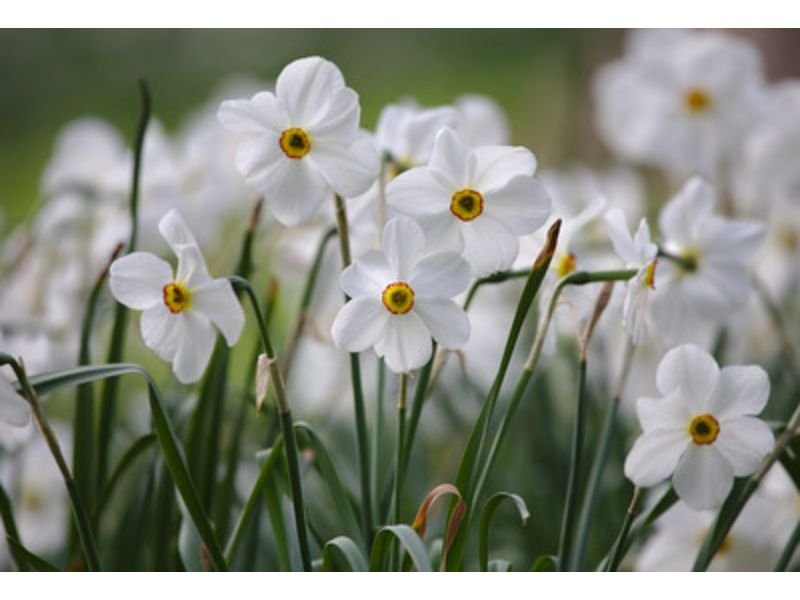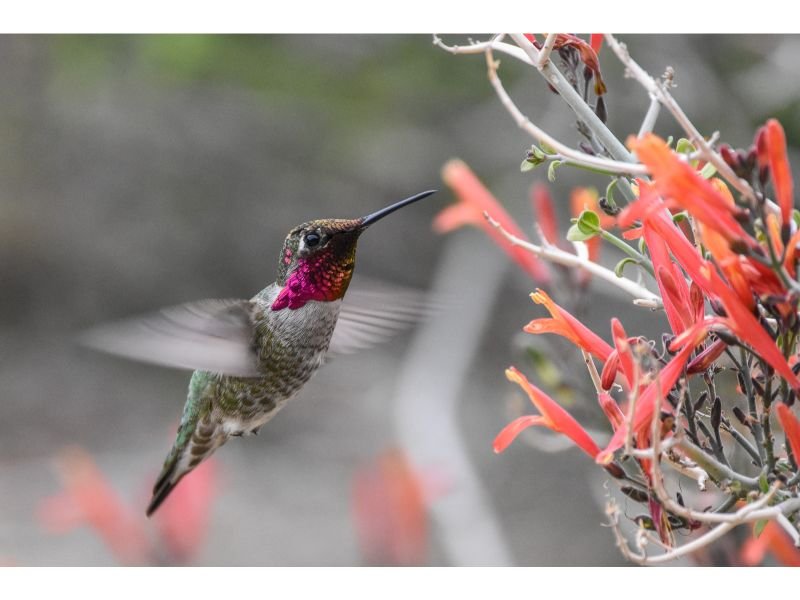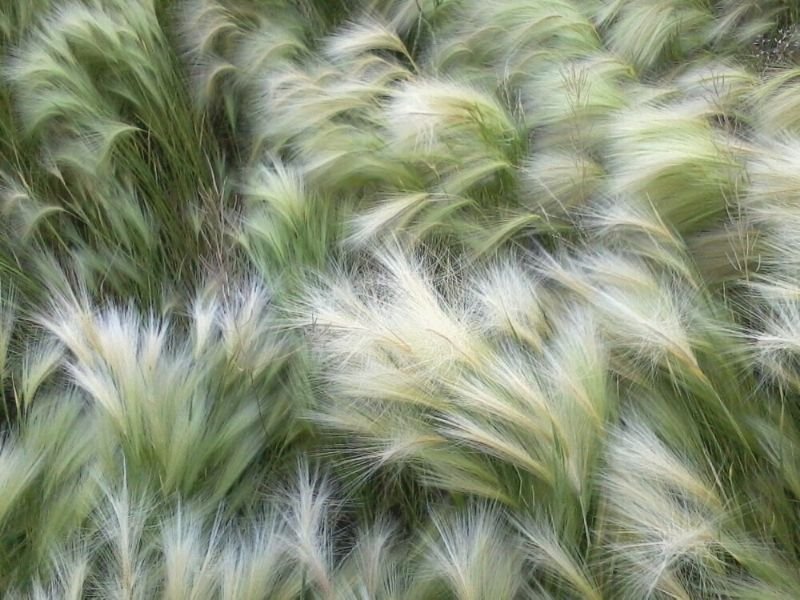When we talk about coneflower (echinacea), it’s the purple one that comes first into most people’s minds. But now, it’s time for the sun-kissed yellow coneflower to take the spotlight! The following varieties are sure to captivate and dazzle with their bright petals and dazzling personalities. From compact dwarfs to towering types, these yellow coneflower varieties are here to redefine your garden’s elegance.
Table of Contents
Yellow Echinacea Varieties to Brighten Up Your Garden
Bushe’s Coneflower (Echinacea paradoxa)
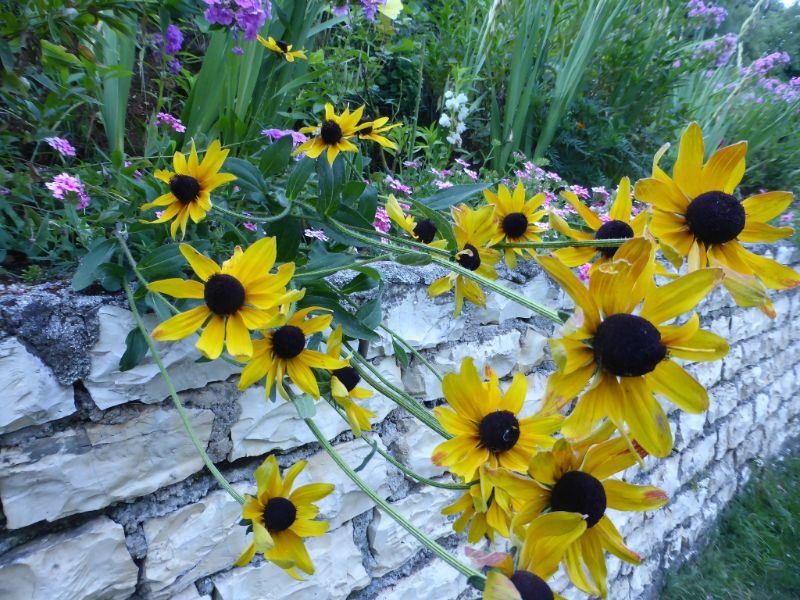
Growing Zones: 3 to 9
Sun: Bright, direct-to-filtered shade
Soil: Permeable, sandy or loamy, humus-rich
Size: 2 to 3 feet (60 to 90 centimeters) tall
Nicknamed Ozark coneflower, bushes coneflower is a tall yellow coneflower variety that is considered a rare species. This perennial is endemic to the Ozark region of Missouri and Arkansas, where they got their nickname, and has adapted to survive in areas with limited water supply. Like many coneflower species, bushes coneflower is also a tasty snack for most pollinators, thanks to their bright yellow petals.
Mellow Yellow (Echinacea purpurea ‘Mellow Yellows’)

Growing Zones: 4 to 8
Sun: Direct to partial sun
Soil: Fertile, porous
Size: 2 to 2.5 feet (60 to 76 centimeters) tall
In contrast to bushe’s coneflower, mellow yellow is a medium-sized yellow coneflower variety with a paler complexion and a hint of pale golden color. However, like its cousin, bushe’s coneflower, this beginner-friendly herbaceous perennial can also withstand periods of drought, making it a wise choice for water-wise gardens. Mellow yellow typically has a long blooming period, usually lasting from early fall to mid-summer.
Harvest Moon (Echinacea paradoxa x purpurea ‘Harvest Moon’)

Growing Zones: 4 to 9
Sun: Filtered shade, bright shade
Soil: Fast-draining, fertile
Size: 2.5 to 2.6 feet (60 to 80 centimeters) tall
This tall yellow coneflower is a unique variety that resulted from the hybridization of Echinacea purpurea with Echinacea paradoxa. Harvest Moon typically exhibits an upright growth habit and possesses stunning colors from both of its plant parents. This plant is not suitable for heavy clay soil as this type of soil is prone to being waterlogged.
Daydream (Echinacea ‘Daydream’)

Growing Zones: 4 to 9
Sun: Bright, direct
Soil: Porous, fast-draining, tolerant to poor soil
Size: 1.8 to 2 feet (54 to 60 centimeters) tall
Growing daydream coneflowers feels like having a dream come true. Thanks to their dreamy appearance of pale yellow petals and greenish-dark brown centers, this yellow coneflower cultivar gives off that ‘soft’, dream-like aesthetic. Daydream echinacea adapts well to various soil types, but this plant prefers sandy or loamy soil that usually has better drainage but still restrains moisture.
Sombrero Lemon Yellow (Echinacea ‘Sombrero Lemon Yellow’)
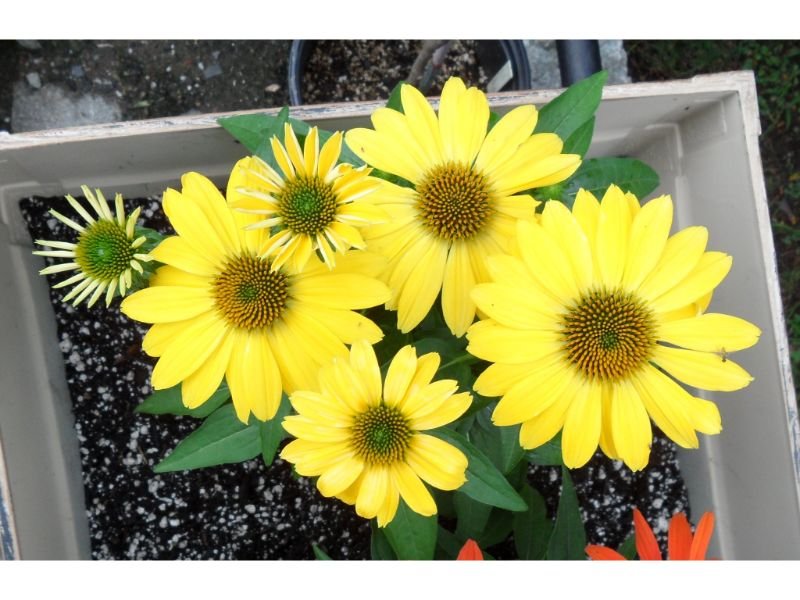
Growing Zones: 3 to 9
Sun: Bright, direct shade
Soil: Permeable, nutrient-rich
Size: 1.5 to 2 feet (45 to 60 centimeters) tall
As the name indicates, sombrero lemon yellow has a unique, droopy bright lemon petal and protruding yellowish-brown and green centers, making the plant look just like sombrero hats! Considered a compact to medium-sized yellow echinacea cultivar, sombrero lemon yellow rather thrives in areas that achieve at least 6 hours of bright light each day and is not a huge fan of overwatering.
Yellow My Darling (Echinacea ‘Yellow My Darling’)
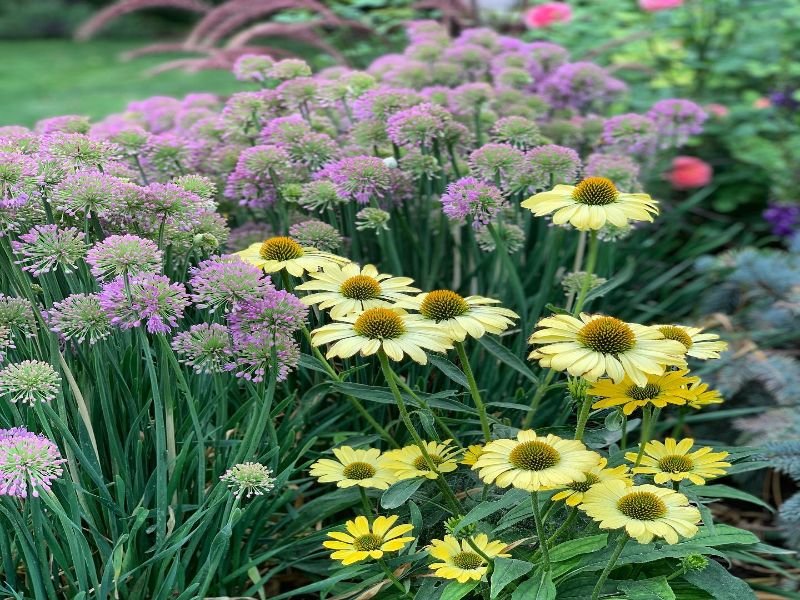
Growing Zones: 4 to 8
Sun: Bright, direct to partial shade
Soil: Fast-draining, sandy or loamy, nutrient-rich
Size: 1.3 to 2 feet (40 to 60 centimeters) tall
Often confused with sombrero lemon yellow due to its similar flower arrangement, yellow my darling echinacea features a less-intense creamy yellow hue that sometimes may appear as whitish-yellow. This yellow echinacea cultivar is rich in nectar and is highly attractive to butterflies and bees. They can withstand dry conditions but require frequent watering to promote health and growth.
Limited-Space Friendly Yellow Dwarf Coneflower Varieties
Lemon Drop (Echinacea ‘Lemon Drop’)

Growing Zones: 3 to 9
Sun: Direct to filtered shade
Soil: Porous, well-drained
Size: 1.25 to 1.5 feet (38 to 45 centimeters) tall
We all might agree that lemon drop is one of the most unique-looking yellow cornflower cultivars. Unlike the other varieties, which have a daisy-like petal arrangement, the lemon drop has a prominent cone-shaped, semi-double center that is surrounded by sparse, outward, and droopy petals, giving the flower almost a yellow marigold-like appearance. If you’re a fragrant flower enthusiast, you should try this variety, as lemon drop emits a delightful scent that can be described as citrusy.
Golden Skipper (Echinacea ‘Golden Skipper’)

Growing Zones: 4 to 9
Sun: Bright to filtered shade
Soil: Permeable, somewhat nutrient-rich, sandy
Size: 1.5 feet (45 centimeters) tall
‘As bright as a gold’ is the perfect sentence to describe the vision of the golden skipper coneflower. Once established, this native to Northern America flowering perennial requires minimal care. However, more regular watering during the hot summer and occasional deadheading is still needed to keep this gorgeous plant blooming beautifully. Due to their compact size, golden skippers can be planted in various locations, including borders, containers, and pots.
Yellow Rainbow Marcella (Echinacea ‘Yellow Rainbow Marcella’)

Growing Zones: 4 to 9
Sun: Direct, bright light
Soil: Fast-draining, moderate fertility, sandy or loamy
Size: 1.5 to 2 feet (45 to 60 centimeters) tall
To all plant lovers who favor flowers with gradient colors, yellow rainbow Marcella is calling you out! As the name implies, this yellow cornflower species is not merely just blessed with a yellow hue. Yellow rainbow marcella is a yellow variation of rainbow marcella coneflower with bright yellow and hints of salmon pink at the center part of each petal. This gradient color blends exquisitely with its prominent, dark reddish-tan center that is a home for various bees and butterflies.
Chiquita (Echinacea ‘Chiquita’)

Growing Zones: 4 to 9
Sun: Full, bright light
Soil: Well-aerated, humus-rich
Size: 1 to 1.6 feet (30 to 48 centimeters) tall
Although small in size, Chiquita is a yellow coneflower cultivar with a big personality that is sure to capture your heart and soul. Well-known for its pale creamy white daisy-like flowers, this plant also stuns with greenish-yellow centers and elongated pale foliage that can appear slightly yellow under certain angles and lights. In terms of maintenance, Chiquita is not different from its coneflower cousins. This plant is drought tolerant but won’t likely survive in a prolonged season of waterlogged soil.
Are All Yellow Coneflower Varieties Edible?
You might have ever seen purple coneflower in one of those herbal syrups for flu, coughs, and the immune system, but how about the yellow coneflower varieties? Are they as edible as their purple cousins and can be used to treat certain illnesses?
No matter what the color is, there’s no known record of toxicity in coneflower, and they’re not known for being poisonous either. However, yellow echinacea cultivars are primarily grown for their attractive flowers rather than as food. It’s also worth noting that the edibility and the potential medicinal features of a plant are varied, so don’t forget to consult a health professional before consuming any plant material, either with or without known toxicity.
What Companion Plants Matches Well with Yellow Echinacea?
Have you ever thought of doubling up the elegance of your yellow echinacea garden with the help of companion plants? You’ve come to the right section! Although it’s perfectly fine to just grow these yellow coneflower cultivars, adding companion plants with similar or the same needs can enhance the overall visual appeal and a harmonious garden setting.
Some companion plants that look flawless with yellow coneflower and would not disrupt their growing include black-eyed Susan, which is the plant’s major look-alike, ornamental grasses, catmint, coreopsis, Russian sage, bee balm, salvia, to the plant’s cousin itself–that is purple coneflower!
Celebrating the Diversity of Yellow Coneflower Varieties
Yellow coneflower cultivars will bring a ray of sunshine to any landscape. Overall, this vivid-colored plant needs full to partial sun, moderately humus-rich soil with moderate watering, and a good drainage system to thrive without hassle. Yellow coneflower makes an exemplary companion for plants such as black-eyed Susan and even catmint as they share similar growing conditions and complement each other.

New author in the hood. Loves gardening and flowers are my spirit animals (yes I know they are not animals but I insist). I will be covering most of the flowers’ topics here and occasionally random though as well.

